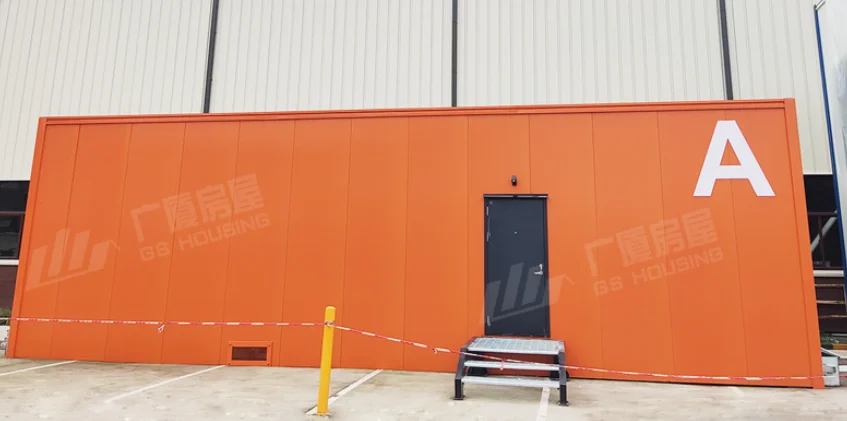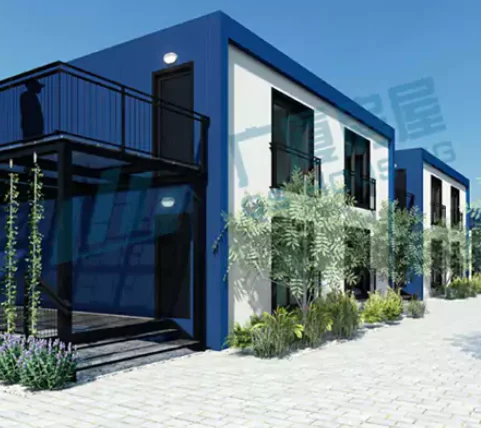Semi Permanent Modular Preschool Buildings Offer Advantages for Growing Preschools
Semi Permanent Modular Preschool Buildings Offer Advantages for Growing Preschools
When a preschool reaches full capacity, decision makers usually face the same question: build new permanent classrooms, or bring in semi permanent modular units that can be set up in weeks? Semi permanent modular preschool buildings are factory-produced structures designed to last for many years, but with the option to relocate, resize, or dismantle if needed.
They are not “temporary trailers.” Instead, they are durable classrooms with insulation, wiring, and safety features just like conventional buildings. The difference is in the way they are manufactured. Sections are built off-site, transported flat-packed or in modules, and assembled quickly at the school.
Understanding Semi Permanent Modular Preschool Buildings
For early education centers, the attraction is obvious: semi permanent modular buildings reduce waiting time for new classrooms. In cities where demand for preschool places rises faster than land approvals, this flexibility is a lifesaver.
Compared with permanent modular structures, semi permanent ones are lighter, easier to move, and often more affordable. They suit schools with fluctuating enrollment, or on land that may not be secured for decades.

Key Benefits for Growing Preschools
Faster Construction Timelines Reduce Classroom Shortages
One of the most pressing problems schools face is time. Traditional buildings can take 12 to 18 months from concept to use. Semi permanent modular preschool buildings cut that down drastically—often to a few weeks.
GS Konut has experience delivering modular classrooms over summer breaks in China. In Hebei, one two-storey modular building was finished in time for students to return from holiday, avoiding disruption during the semester. That’s the kind of speed that parents and teachers remember.
Flexible Layouts Adapt to Enrollment Changes
Preschool enrollment is rarely steady. A sudden baby boom in a district can cause an urgent need for five extra classrooms. Semi permanent modular systems are designed to scale: schools can add another row of classrooms next year, or remove units when numbers fall.
Units can be joined side by side or stacked up to three levels. A small preschool can turn into a full campus without buying an extra square meter of land. And if you think that means bland boxes—no. With different finishes, window sizes, and roof options, modular preschool buildings today look warm and welcoming.
Cost Efficiency Supports Budget Conscious Preschool Operators
Every school leader knows the budget conversation with local education boards can be tough. Semi permanent modular preschool buildings are often 20–30% cheaper than traditional construction.
Savings come from shorter project timelines, fewer site workers, and reduced waste. GS Housing’s flat packed container houses, for example, can cut water use and concrete consumption by 60% compared to site-built structures. For preschools, that can mean freeing up funds for playground equipment or staff training instead of pouring more into bricks and mortar.
GS Housing Expertise in Modular School Projects
Proven Track Record in Kindergarten and Preschool Construction
GS Housing is not new to education projects. The company has delivered modular kindergartens and classrooms across China, including projects in Hangzhou. The project demonstrates not only the speed of construction, but also the ability to customize layouts for children—safe corridors, bright learning Spaces and age-appropriate restrooms.
Modular Systems Backed by Six Large Scale Production Bases
The company operates six major factories in China, with an annual capacity of 200,000 modular housing units. That scale means consistency in quality and the ability to handle urgent orders. For a preschool operator, it translates to reliability: the buildings arrive when promised, and the standards are the same whether it’s a small rural kindergarten or a city project serving hundreds of children.
Case Examples From China and Global Education Projects
Beyond China, GS Housing has been involved in education-related modular projects in the Middle East, where schools had to expand quickly for new communities. The company’s experience in adapting modules for different climates—sandstorms in Saudi Arabia, humidity in coastal Asia—adds credibility for international preschool operators.
Product Features That Support Preschool Applications
Safe and Durable Materials Certified for Long Term Use
Semi permanent doesn’t mean low quality. GS Housing uses steel structures with fire-resistant and waterproof panels. The buildings are tested for seismic resistance up to magnitude 8 and wind resistance up to level 12. For preschools, where children’s safety is paramount, that reassurance matters more than sleek design.
Energy Efficient and Child Friendly Indoor Environments
Inside, classrooms can be equipped with insulation, air conditioning, and daylight-friendly windows. Teachers appreciate that these buildings keep stable indoor temperatures, reducing distractions for young learners. Parents also notice when classrooms feel bright and safe, not dark boxes.
Expandable Flat Pack Container Houses for School Facilities
GS Housing’s flat packed container houses are especially suitable for semi permanent preschool use. They arrive in compact form, saving transportation cost, and are assembled quickly on site. Schools can combine them into larger facilities, adding playrooms or admin offices as needed. The ability to dismantle and reuse them is a real plus when land leases change or new campuses open.
Why Semi Permanent Solutions Make Sense for Expanding Schools
Relocatable Structures Save Cost on Future Moves
Not every preschool has a guaranteed long-term lease. In urban districts, land allocation for schools may change after five or ten years. Semi permanent modular units can be disassembled and relocated to another site. That prevents the waste of investing in a fixed building that might be torn down later.

Design Flexibility Allows Multi Purpose Learning Spaces
A preschool today may need extra classrooms. Next year, perhaps a library or arts room. Semi permanent modular designs can adapt, with panels and layouts reconfigured. This adaptability supports modern teaching methods, where play-based learning requires open, flexible areas.
Balance Between Short Term Needs and Long Term Value
Permanent buildings make sense when land is secure and budgets are large. But for many preschools, semi permanent modular solutions strike the balance: sturdy enough to last decades, flexible enough to change when the school changes. It’s a middle path between temporary fixes and immovable commitments.
Comparing Semi Permanent and Permanent Options
When Permanent Modular Buildings Are the Better Choice
Permanent modular preschool buildings are ideal when schools own the land and plan for stable enrollment over decades. They often use heavier materials like concrete modules, with higher fire ratings and insulation. For flagship campuses, permanent is the logical choice.
When Semi Permanent Units Provide Greater Flexibility
Semi permanent modular classrooms shine when schools are still growing, or when local government provides land use rights on a short-term basis. They are also practical in disaster recovery scenarios, where learning must resume quickly but the final site is undecided.
Partnering With GS Housing for Your Next Preschool Project
Özelleştirilmiş Tasarım and Engineering Support
GS Housing provides more than just boxes. Their design teams work with school planners to create tailored layouts—whether that’s classrooms with attached washrooms, or modular blocks that include playground shelters.
Professional Installation and Rapid Deployment Experience
The company maintains an installation team of over 360 trained professionals. Many of them have handled large-scale projects like the 4,480-unit NEOM camp in Saudi Arabia. For preschools, that means your project is in the hands of people used to working under tight deadlines.
Commitment to Quality, Sustainability and Safety
“Quality is dignity” is one of GS Housing’s mottos. That focus translates into rigorous factory checks and the use of recyclable materials. For schools conscious of sustainability goals, semi permanent modular solutions provide both eco benefits and cost savings.
Sık Sorulan Sorular
Q1: How long can semi permanent modular preschool buildings last?
A: Semi permanent units from GS Housing are designed for 20 years or more of service, with proper maintenance. Many schools continue using them well beyond that timeframe.
Q2: Can modular preschool buildings be customized for safety and child-friendly features?
A: Yes. GS Housing offers options like low windows, safe stair railings, anti-slip flooring, and eco-friendly materials. Layouts can also be designed with separate activity rooms and playground access.
Q3: How fast can a preschool project be completed using modular systems?
A: Depending on the size, projects can be installed in as little as a day or three.



